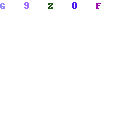:: Navigation ::
- 1: THE PAST SLAVERY - THE PRESENT CULTURE.
- 2: Original locations of the slave trade.
- 3: Art project about the history of slavery.
- 4: Topics.
- 4.1: The Historical Aspects of Slavery.
- 4.2: Slavery - Religion and Magic Practices.
- 5: Press.
- 6: Career/ development.
- 7: Contact Form.
Slavery - Religion and Magic Practices
The Cabildos, communities of Africans who belonged to the same tribe or people, were organisations of mainly religious but also of social and protective character. They were legalised in the year 1755. Today, the most important ritual practices are Santeria, Palo Monte and Abakua.
They portray the cycle of life - birth, motherhood, the prime of life, age and death. The priests (Santeros) are not only masters of ceremony but also soothsayers. In both the Santeria and Abakua cults, there is a chief god called Ochun and twenty other gods, called Orishas. Since the pressure to conform to the Catholic faith was so strong, Afro-Cubans tended to cloak their gods in the mantle of Catholic saints. And it is hard to tell whether the African slaves did this consciously, partly for purposes of camouflage, or whether they thought they recognised their gods in certain Christian saints.
Colours, too, play an important part: every god and his Christian counterpart is attributed a characteristic colour. The gods are placated with flowers and animal sacrifices. This 'Veneration of the saints' has great meaning for all Cubans today, no matter what the colour of their skin. Guanabacoa and Regla, districts of Havana, are regarded as the main centres of Santeria. In the Palo Monte cult, it is not gods but natural forces, certain plants and animals and rocks that are venerated. Objects with specific magical attributes are worshipped The central feature of this cult of adoration is a kind of pot - the 'Nganga'. This 'Nganga' (pot) is filled with magic objects (e.g. graveyard soil, fragments of human skeletons, pieces of twig) - the contents embodying all the powers operating in the world.
The circle is dominant in representing the spirit  .
.
Below the large circle is another arrow attached to the extension of a magical triangle; this attempts to create a balance between the positive (+) and negative (O) forces. Olofi struggles to reconcile positive and negative forces. He draws his powers from the triangle, symbolic of fire but also of purity and strength.
The representation of the  Makuto Judio (evil forces) which must be combated with the aid of ashes, also includes the circular sun symbol, among other things.
Makuto Judio (evil forces) which must be combated with the aid of ashes, also includes the circular sun symbol, among other things.
Here, the round form stands for the spirit Nfumbe, who is symbolic of wicked forces. The horizontal line dissecting the circle symbolises the path of the questioner. The small parallel lines running above it are obstacles on the path of the questioner.
The small lines crossing the interior of the large circle symbolise physical and mental powers. The small circle is symbolic of the concentrated powers of the spirit, which flow in the direction of the horizontal line (path).
The spirit has the task of collecting the powers and leading to a positive result, namely that of driving away the Makuto Judio (evil forces). Kalunga, another spirit symbolised by a circle, does not stand for the sun but for the full moon, which influences the vital forces: water (sea, rivers etc.) The vertical arrow represents the sea in its entirety, with all its waters and its mystery.
Kalunga, another spirit symbolised by a circle, does not stand for the sun but for the full moon, which influences the vital forces: water (sea, rivers etc.) The vertical arrow represents the sea in its entirety, with all its waters and its mystery.
The horizontal arrow stands for the rivers and streams that all flow into the sea. they all meet in the centre of the war (moon) and symbolise the movements of the earth. El Maja or Noca is a serpentine arrow, a positive spirit that protects the powers of the Kalunga. The small crosses in the centre ofthe circle (moon) represent the spirituality of the Nganga (magic pot).
 Kunanquisa (Odudua) - Tiembla Tierra (shaking earth) - Mama Kengue (Obbatala)
Kunanquisa (Odudua) - Tiembla Tierra (shaking earth) - Mama Kengue (Obbatala)
 Lucero (morning star)
Lucero (morning star)
 Nfuiri
Nfuiri Baluande - Yemaya (Seven Seas in Storm)
Baluande - Yemaya (Seven Seas in Storm) Centella Sacara Empeno
Centella Sacara Empeno Kengue - Obbatala (Santeria) - Las Mercedes (Catholicism)
Kengue - Obbatala (Santeria) - Las Mercedes (Catholicism)
 Firma Para Espantar Un Espiritu:
Firma Para Espantar Un Espiritu:
The body also bears the symbol of duality (two crossed arrows).
Translated in English by
Eileen Cahoon
